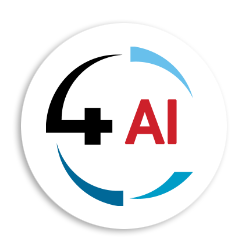Blog
Energy Management: Where do I start?

Visibility: The First Step to Smart Energy Management
The first step to optimising energy use is gaining visibility into when and where your energy resources are being utilised and/or generated. Role players within your organisation require visibility to understand their impact and their achievement towards targets set. The following would help you obtain better visibility:
- Energy Metering, Monitoring and Management:
- Identify the appropriate hardware at key measurement points.
- Gain access to load profile data and apply cost structures.
- Real-Time Monitoring and Alerts as appropriate for your use case.
- Predictive analytics.
- Data Analysis
- Identify patterns and detect anomalies.
- Set benchmarks based on past performance or industry benchmarks.
- Forecast energy availability and energy consumption patterns.
- Behavioural Awareness: Education of employees empower them to understand and affect their energy use. Best practices can be established and encouraged in daily routines.
- Integration to other systems (BMS/SCADA/MES/etc):
- Allowing visibility of your energy in context to operational parameters. An example would be to implement Energy Intensity KPIs and provide visibility on achievement of this through integrating production data into your Energy Management platform.
- Action control through the integration where the Energy Management System itself may not be able to.
Form Fits Function: Tailoring Energy in your Data Strategy
When you're crafting an energy management strategy, it's essential to identify the data you need to achieve your objectives effectively. Temporary recordings and audits can establish baselines for initiatives related to renewable energy, energy efficiency, and power quality. However, to avoid repetition, consider implementing an Energy Metering System. Identify focus areas based on consumption or business criticality and prioritise them in your metering strategy.
For example, if your organisation is on a Time-of-Use tariff with significant "Maximum Demand (MD) Control" charges as referred to in the example, your Energy Management/Measurement System should provide the data and predictions required to manage your MD efficiently, either automatically or through manual intervention.
Many energy-saving interventions are behaviour-driven and can be implemented without the need for significant capital investments. Consider MD as an example. In regions like South Africa, where energy-intensive operations are billed based on MD, exceeding your previous MD value will lead to higher rates, which you will be paying for a year as they are calculated on a 12 month rolling window.
But here's the catch: you can't control MD retrospectively using billing metre data. Key terms to take note of from the tariff structure as defined in the Eskom tariff booklet:
“Maximum demand means the highest average demand measured in kVA or kW at the POD/point of supply during a 30 minute integrating period in a billing month.” (1)
“Annual utilised capacity means the higher of the notified maximum demand (NMD) or the maximum demand, per POD/point of supply measured in kVA, and registered during a rolling 12-month period.” (1)
“Network capacity charge (previously known as the network access charge) means the R/kVAor R/POD fixed network charge raised to recover network costs and depending on the tariff is charged on the annual utilised capacity…”(1)
Accountability: The Key to Sustainable Energy Management
One word, "Accountability," can make or break your energy management efforts. As energy management is an ongoing process, it's crucial to assign responsibility to individuals or teams for evaluating performance and adjusting tactics to meet your overall strategy. A well-thought-out plan can fail without this critical element.
Your journey towards efficient energy management begins with a strategic approach. Start with a thorough assessment of your current energy resources and consumption patterns, set clear objectives, invest in data collection and monitoring, and encourage behavioural changes among employees. Additionally, consider renewable energy and efficiency initiatives and establish an energy management team. Ensure compliance with ESG reporting standards, and continuously improve your strategies as technology evolves.
- Eskom Tariffs & Charges Booklet 2022/2023 available from https://www.eskom.co.za/distribution/wp-content/uploads/2022/05/4756-ESKOM-Tariff-Booklet-2022-Final-Rev.pdf
Now is the time to take control of your energy future. Embrace the power of smart energy management. Reach out to 4Sight today for a consultation to discuss your organisations specific needs. Email This email address is being protected from spambots. You need JavaScript enabled to view it.

